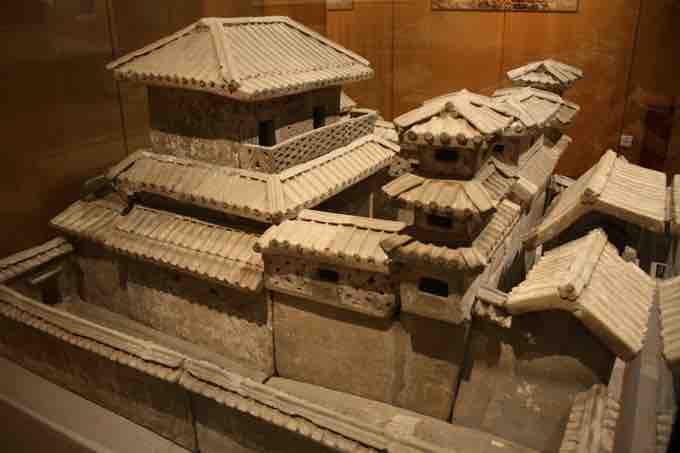Background: The Six Dynasties
The Six Dynasties is a collective term for six Chinese dynasties during the periods of the Three Kingdoms (220–280 CE; also known as the Eastern Wu or the Cao Wei), the Jin Dynasty (265–420 CE), and the Southern and Northern Dynasties (420–589 CE, which include the Liu Song, Southern Qi, Liang, and Chen Dynasties). During this time, the Chinese people made great advancements in architecture.
Architecture in the Six Dynasties
The spread of Buddhism dramatically influenced Chinese architecture. By the 6th century, Buddhism had spread with tremendous momentum throughout China, and Chinese culture was adjusting and adapting its traditions to include Buddhism worship. Although multiple-story towers such as guard towers and residential apartments existed in previous periods, the distinct Chinese pagoda tower (used for storing Buddhist scriptures) evolved during the Six Dynasties period from the stupa, the latter originating from Buddhist traditions of protecting sutras in ancient India. The Chinese transformed the rounded earthen mound of the stupa into the towering pagoda to house the sacred buried relics of Buddha at its core.
The Songyue Pagoda built in 523 is the oldest extant pagoda in China; its use of brick instead of wood had much to do with its endurance throughout the centuries. The unique many-sided shape of the Songyue Pagoda suggests that it represents an early attempt to merge the Chinese architecture of straight edges with the circular style of Buddhism from the Indian subcontinent. The perimeter of the pagoda decreases as it rises, as this is seen in Indian and Central Asian Buddhist cave temple pillars and the later round pagodas in China.
Songyue Pagoda
A circular-based stone-constructed Buddhist pagoda built in 523 CE during the Southern and Northern Dynasties period of the Six Dynasties. It is the oldest existent stone Chinese pagoda, although wooden Chinese pagodas that existed beforehand have since been worn down and destroyed.
Funerary Models
Tombs of a number of members of the ruling Xiao family, with their sculptural ensembles in various states of preservation, are located near Nanjing. The best surviving example of a monumental statuary from the Liang Dynasty is perhaps the ensemble of the Tomb of Xiao Xiu (475–518 CE), a brother of Emperor Wu, located in Qixia District east of Nanjing.
Although mostly only ruins of brick and rammed earth walls and towers from the Six Dynasties have survived, information on ancient Chinese architecture (especially wooden architecture) can be discerned from more or less realistic clay models of buildings created by the ancient Chinese as funerary items. Much of what is known of the architecture of this period comes from artistic goods that depicted miniature versions of Six Dynasties architecture. Throughout the Six Dynasties, miniature models of buildings or entire architectural ensembles were often made to decorate the tops of "soul vases" (hunping) found in many tombs of that period. In addition to illustrating architecture, jar designs often incorporated animal and Buddhist figures.
Eastern Wu artwork depicting architecture
A green-glaze ceramic jar from the Three Kingdoms (or Eastern Wu) period with human figures, birds, and architecture, on display in the Nanjing Museum.
Jar of the Western Jin
Jar designs of the Jin Dynasty often incorporated architectural designs as well as animal and Buddhist figures.
Advances in Technology
Although relatively short, technology advanced significantly during the Three Kingdoms (220-280 CE) period, including in the realm of architecture. Shu chancellor Zhuge Liang invented the wooden ox, suggested to be an early form of the wheelbarrow, and improved on the repeating crossbow. Wei mechanical engineer Ma Jun is considered by many to be the equal of his predecessor Zhang Heng. He invented a hydraulic-powered, mechanical puppet theater designed for Emperor Ming of Wei; square-pallet chain pumps for irrigation of gardens in Luoyang; and the ingenious design of the South Pointing Chariot, a non-magnetic directional compass operated by differential gears.

Pottery Palace
Though this example is from the Han Dynasty (c. 2nd century BCE - 2nd century CE), this pottery palace provides a good example of pottery created for elite burial that illustrates the architecture of the time.